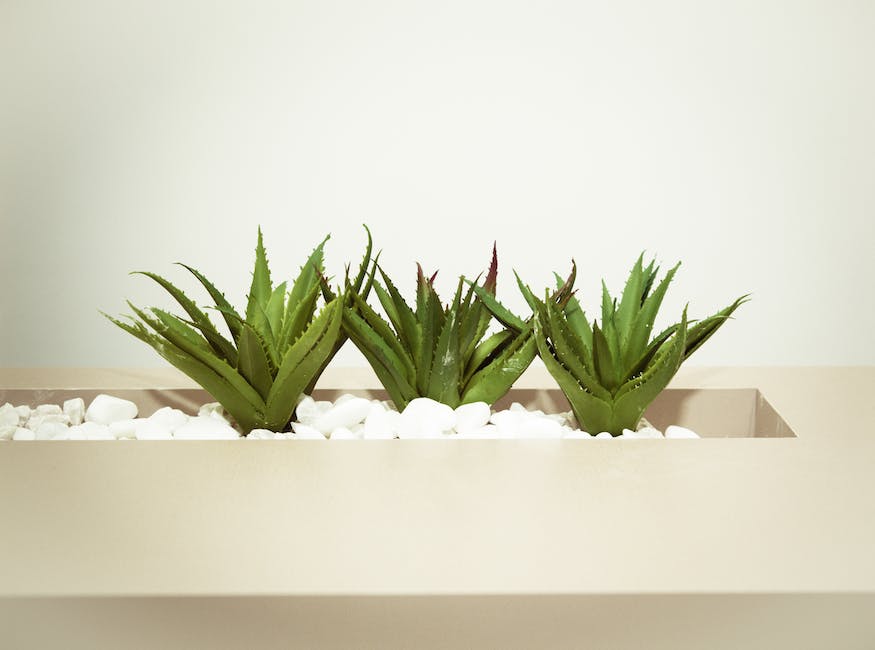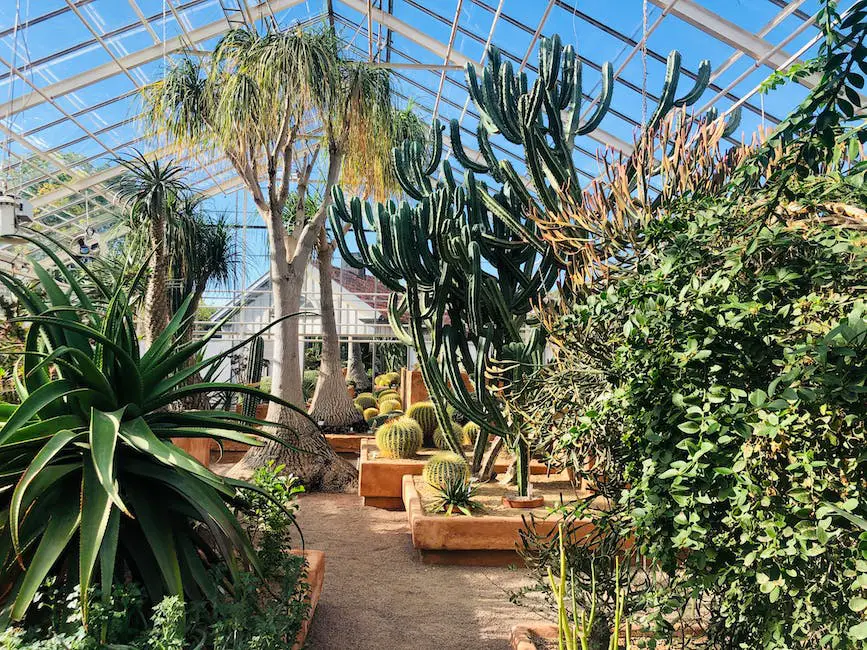Many gardeners aspire to establish a relaxing outdoor space that needs little maintenance. This thorough guide is designed specifically for you if you’re one of those looking for the ideal union of beauty and easy upkeep.
This book offers crucial information, such as plant development patterns and ideal climatic conditions, by thoroughly examining several low-maintenance outdoor plants suited for a variety of garden styles.
Explore inventive landscaping ideas to easily incorporate these plants into your outdoor spaces as well as plant-care recommendations to make sure they grow with the least amount of work.
Identifying Low Maintenance Outdoor Plants
Strawberry Sundae Hydrangea
Due to its stunningly brilliant flowers that change from creamy white to deep rose as the season goes on, this kind of hydrangea is a fan favorite.
With its cone-shaped blossoms, this low-maintenance perennial delivers an alluring display while requiring little maintenance.
The Strawberry Sundae Hydrangea makes a fuss-free, beautiful addition to garden owners’ outdoor spaces because it grows well in full to partial sun and well-drained soil.
Black-eyed Susan
The Black-eyed Susan, or Rudbeckia hirta, is a stiff, erect annual or short-lived perennial plant that is indigenous to the eastern and central United States.
This plant, which has a hardy growth habit and a preference for full sun and loamy, well-drained soil, is adaptable and attractive, decorating many gardens with flowers that appear to be burning golden-yellow.
Stonecrop (Sedum)
Sedum, also known as stonecrop, is a large genus of blooming plants that offers a wide range of hues, forms, and sizes, making it appropriate for any aesthetic fancies of a garden owner.
According to its name, the plant grows a “carpet” of succulent leaves before blooming blooms with star shapes that range in color from white to pink. Sedums thrive in sunny areas of the garden and well-drained soil because they are drought-tolerant plants.
Lavender
Lavender, which is highly prized for its color, aroma, and medicinal benefits, has a reputation for being low-maintenance due to its hardiness and tolerance to drought.
It does best in sunny, alkaline, well-drained environments. Its ability to repel pests is a fascinating quality because it eliminates the need for a significant amount of garden upkeep.
Mexican Feather Grass
Mexican feather grass, commonly known as Nassella tenuissima, lends landscapes with lower maintenance requirements a flowy, wind-blown look. Early in the summer, little, straw-colored flower spikes that are pollinated by the breeze appear.
This ornamental grass prefers soil that drains well and full light. It is a fantastic option for a low-maintenance garden because of its reputation for drought tolerance and insect resistance.
Catmint (Nepeta)
Catmint is a herbaceous perennial that enhances gardens with billowy silvery-green foliage and gentle lavender blossoms, making it a favorite of both cats and gardeners.
Catmint (Nepeta), which is hardy and drought-resistant, enjoys full sun to moderate shade and well-drained soils. This low-maintenance plant has a striking trait: it repels pests, especially deer and rabbits.
Daylily (Hemerocallis)
A resilient plant with little maintenance needs, daylilies are known for their brilliant, spectacular flowers and arching, grass-like foliage.
Daylilies are a great plant for the busy gardener because a well-established clump can withstand significant neglect. Their brilliant colors provide your outdoor space a unique character while thriving in full sun to partial shade and tolerating a variety of soil conditions.
Each plant offers a wealth of potential for individuals looking to redesign their garden without the effort of substantial upkeep because to its unique colors, textures, and growth patterns. You can easily and conveniently adorn your outside spaces with these minimal upkeep solutions.

Low Maintenance Outdoor Plants
Care Tips for Low Maintenance Outdoor Plants
How to Select Low Maintenance Plants That Suit Your Garden
When choosing minimal maintenance outdoor plants, there are a number of vital elements to take into account, with the plant’s suitability for your particular climate and garden circumstances being the most crucial.
Perennial plants like Hostas, Daylilies, and Sedums are among the best minimal maintenance choices. Given that they are accustomed to the soil and temperature in your area, native plants are also a great option.
Moreover, low-maintenance succulents like aloes and agaves provide a distinctive appearance to your garden.
Water Requirements
Minimal care plants often require little water. By developing bigger leaves, fewer leaves, or storing water in their roots, these plants, commonly referred to as xerophytic plants, can lessen their demand for water.
It’s important to keep in mind though that even these drought-tolerant plants occasionally require watering, particularly during the dry season.
Make sure your plants aren’t overwatered or left completely dry for an extended period of time by keeping an eye on them and watering them when necessary.
Light and Soil Requirements
Various low-care plants need different amounts of sunlight. While Sedums and Lavenders thrive in full sun, Hostas and Ferns prefer shaded areas. It’s best to research each plant’s light dependencies and place them accordingly in your garden.
The same goes for soil conditions. While most low maintenance plants aren’t finicky about soil, others, like succulents, prefer sandy, well-draining soil. On the other hand, plants like Daylilies can thrive in a variety of soil conditions.
Pest and Disease Prevention
Also, keeping an eye out for pests and disease symptoms will help you keep the health of your low maintenance plants. Although these plants often have fewer problems than others, they are not immune. Aphids, scale insects, and spider mites are some examples of typical pests. Infections can range from bacterial problems like crown gall to fungal infections like leaf spot and mildew.
The best method is to prevent problems. Maintain proper plant spacing to ensure adequate airflow. In order to avoid moist leaves and probable fungal growth, water them at the soil level. To eliminate possible pest habitats, regularly sweep up fallen leaves and other debris from your garden.
Pruning and Fertilizing
Your low-maintenance plants will look their best if you prune them regularly. Not all plants require regular pruning, but for those that do, trimming can invigorate your plants and control unwelcome development.
Low maintenance plants don’t usually require fertilization. Even so, springtime application of a slow-release, multi-purpose garden fertilizer can give your plants a boost and ensure their success all growing season.
It doesn’t necessary take a lot of work to grow a garden that is both aesthetically pleasing and sustainable. Even though they are sometimes described as “low maintenance,” these plants nonetheless need infrequent care and attention to be healthy.
The secret to a beautiful, low maintenance garden that thrives with little effort is being aware of these plants’ demands and providing the necessary care.

Low Maintenance Outdoor Plants
Ideas for Arranging Low Maintenance Outdoor Plants
An Array of Low Maintenance Outdoor Plants
Succulents are a desirable outdoor plant option for people who live in warm climates because of their low maintenance requirements.
These plants, which include agave, aloe, and many cacti species, can tolerate extreme heat and require little water. Also, they enhance the appearance of your garden with their many shapes, sizes, and hues.
Perennials are also a great choice for a fuss-free garden because they come back year after year, reducing the need for annual replanting.
Choose perennials that are native to your area because they will grow naturally in the soil and environment there. Consider taking a look at plants like daylilies, purple coneflowers, and black-eyed susans.
Ground Cover Options
A low-maintenance yard can include a substantial amount of ground coverings. Since these plants outcompete weeds, removing undesirable plants from the garden takes less time. A common illustration is creeping thyme, an evergreen plant with small purple blossoms.
It is a great plant for covering wide areas because of its modest growth rate and spreading tendency. Another choice is moss, which, once established, needs very little maintenance but prefers a moist, shaded location.
Border Plants Ideas
Evergreen shrubs can be a great option for basic, low-maintenance borders. Most only need to be pruned once a year and frequently offer year-round visual pleasure. For well-formed hedges, think about boxwoods or hollies; for a more eye-catching feature, rhododendron and azalea blossoms in vivid colors.
Choose ornamental grasses if you’re seeking for low maintenance plants to produce a natural, carefree vibe. They may give your landscape a lush, flowing edge and can thrive in a variety of soils and climates. They also require very little maintenance.
Container Gardening
If you have a little outdoor space, container gardening is a time- and effort-efficient method to indulge your green thumb. Several plants are known to flourish in pots and need little upkeep. Hostas, which are renowned for their luxuriant foliage, and geraniums, whose vivid blossoms offer a dash of color, are options.
Herbs are a fantastic choice for container gardening. They frequently thrive, need minimal upkeep, and have the added benefit of being practical in the kitchen.
Creating a Low-Maintenance Landscape
Consider using mulch in your landscape layout. Mulch helps retain soil moisture and suppress weeds, which reduces the amount of time needed for watering and weeding. Mulch also adds aesthetic appeal, enhancing your garden’s overall look.
Incorporating hardscape elements, such as stones or gravel, reduces the amount of lawn space that needs to be mowed. Creating a feature like a dry stream bed or rock garden can add an exciting visual element while cutting down on maintenance requirements.
Vertical garden walls or living walls are another low-maintenance outdoor gardening idea. Choose hardy trailing or climbing plants like English Ivy or Creeping Fig. These not only require minimal attention but also help to maximize your space.
Lastly, opt for a drip irrigation system for watering. It’s an effective system that delivers water directly to the plant’s roots, eliminating water waste and keeping leaves dry, which can help prevent plant diseases.

It’s not always necessary to devote a lot of time to gardening or follow intricate maintenance schedules.
Together, we’ve explored a variety of low-maintenance outdoor plants, determined their essential maintenance needs, and thought of inventive ways to include them in our gardens.
With this newfound information, you are prepared to design an outdoor area that not only exudes unmatched beauty but also honors your demand for simplicity and comfort.
Take advantage of these low-maintenance outdoor plants and let your garden serve as a daily reminder of the magnificent beauty of nature and how easily it can be maintained.




